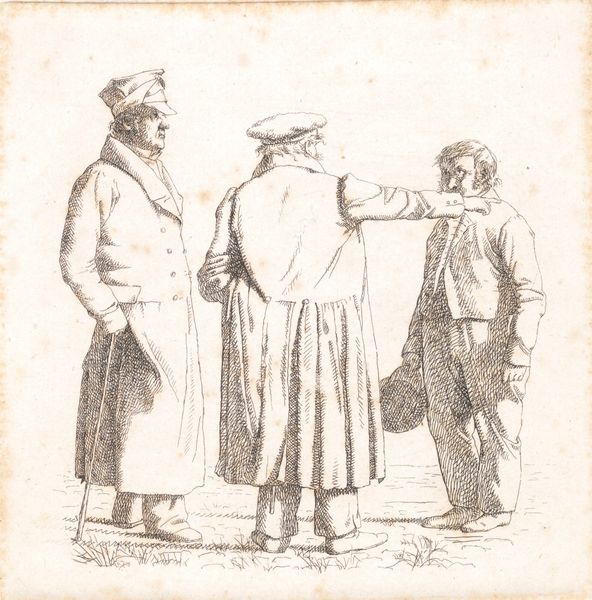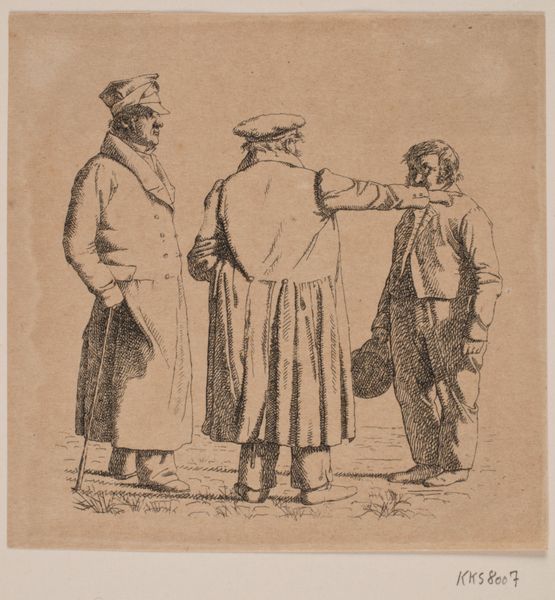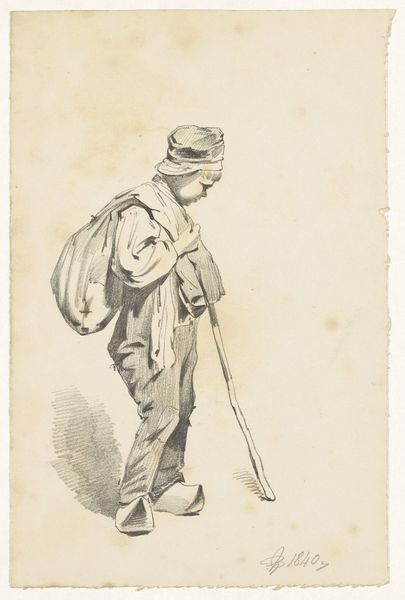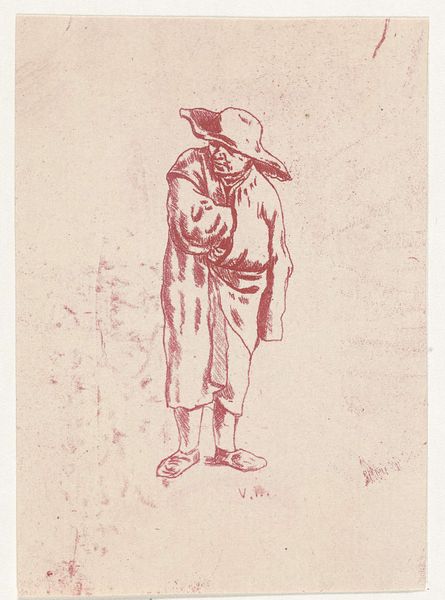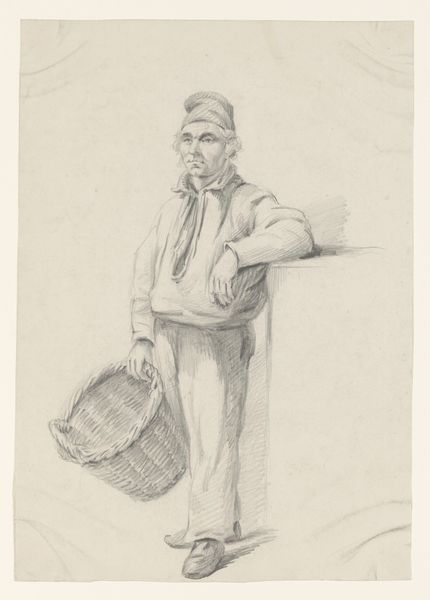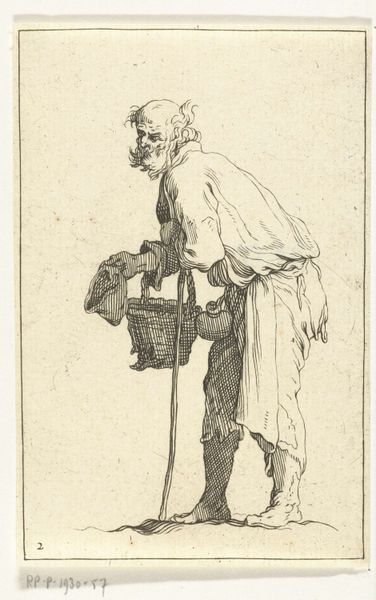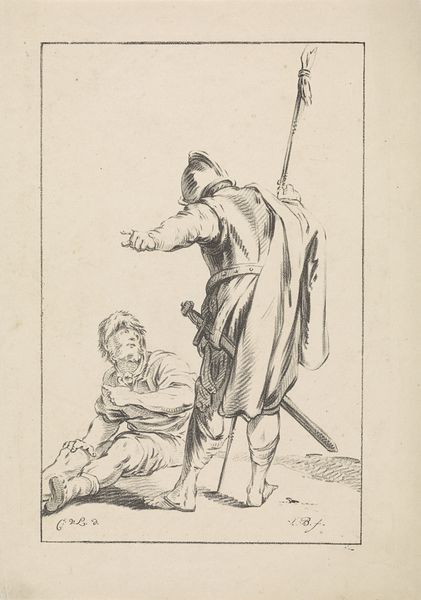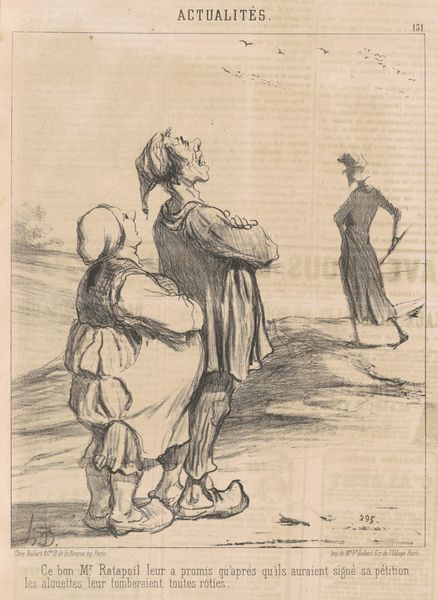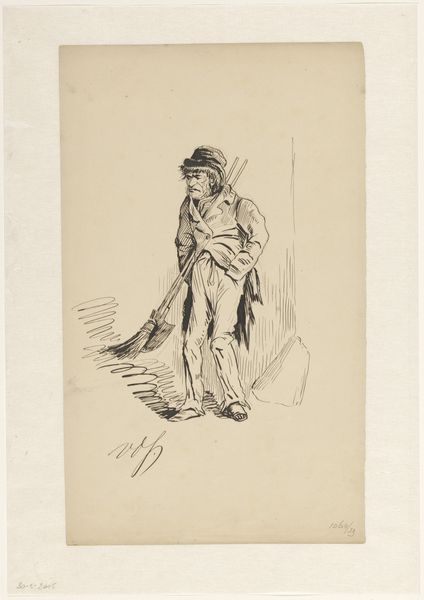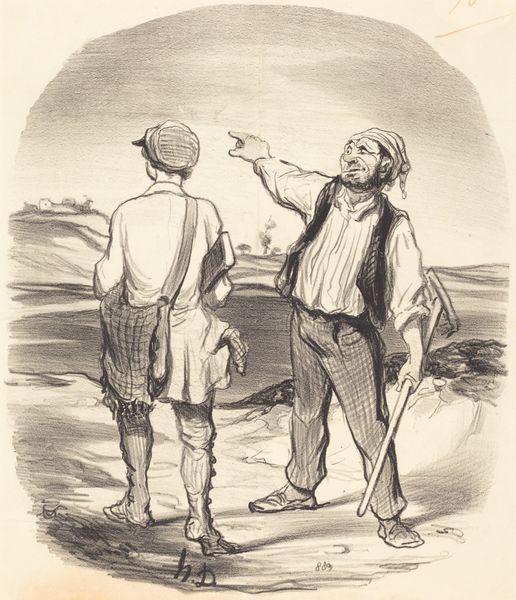
drawing, watercolor, pen
#
portrait
#
drawing
#
caricature
#
watercolor
#
romanticism
#
pen
#
genre-painting
#
realism
Dimensions: 273 mm (height) x 199 mm (width) (bladmaal)
Curator: So, let’s consider this intriguing piece by Martinus Rørbye titled "Gammel italiener set forfra og bagfra", dating back to 1835. He rendered it in pen, watercolor and drawing. What’s your initial read on it? Editor: Well, the immediacy is striking. He’s caught this fella in such a candid, almost caricatured pose. Arms crossed, slightly grumpy expression...and then the same character rendered from the back, more skeletal and muted. I sense a melancholy lurking beneath the surface. Curator: Indeed. Notice the material construction. Rørbye combines the precision of pen lines with the fluidity of watercolor, creating textural depth that brings the subject’s garments to life. There’s a tangible quality to the rendering of the weathered fabric and coarse garments. The artist is pointing to the hard living standards. Editor: It's funny; my eye keeps going to his feet, they look so earthy and connected, grounding the whole figure in a specific time and place. And from the back, it seems he might be holding his tools for labor, or protection. And yet it's somehow dreamlike with those subtle hues, a fleeting impression, and he clearly used his quick notations of people he met during his travels in Europe, including Italy. Curator: Precisely! Rørbye’s skillful rendering of everyday details speaks volumes about 19th-century Italian society. It’s a potent snapshot of labor and class distinctions articulated through clothing and posture. We must remember Denmark's Golden Age was driven by merchants seeking lucrative contracts abroad. It really captures an ethos and a reality of exploitation and a new emerging economic system in Europe. Editor: I see that. This Italian, from both the front and the back, it strikes me that we're talking about the very notion of how we are viewed, perceived and how we want to be viewed! His vulnerability is so tender to watch as we peer into history like that. I guess there is this whole conversation in Europe on its people being just objects of hard work. Curator: Yes! We both see an image as so simple yet filled with the burdens of this historical framework. Well, this definitely changes the experience in the future of encountering more art pieces that have more to show to tell than just their appeal in a visual form. Editor: Agreed! This piece is alive, still whispering across the ages!
Comments
No comments
Be the first to comment and join the conversation on the ultimate creative platform.
